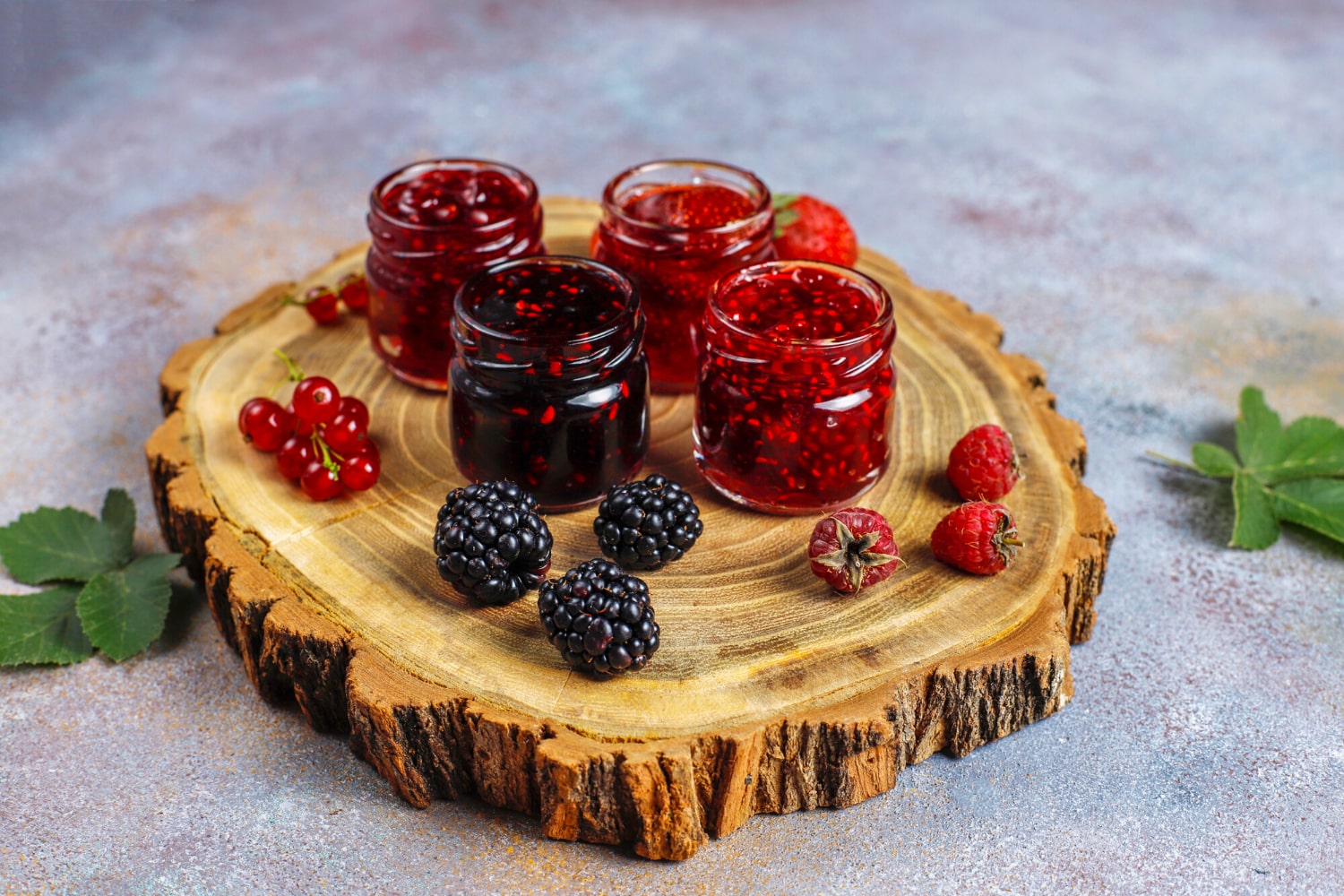Jam is much more than just a sweet spread for toast. It is a symbol of home warmth, family tradition, and culinary craftsmanship that brings back childhood memories and the aroma of fruit simmering in the kitchen. Although jam may seem like a simple product, it hides a rich history, diverse preparation methods, and surprising health properties. The following collection reveals fascinating facts about jam that you might not know. It may even inspire you to make your own homemade batch.
- Jam has ancient origins, dating back to when the Greeks and Romans preserved fruit in honey. This was the earliest form of what we now know as jam. With the spread of sugar across Europe, the recipe evolved and became widely popular.
- The word “jam” is related to the process of boiling fruit with sugar, which is its essential method of preparation. Although countries have different names and techniques, the basic principle remains the same. The differences lie in texture, proportions, and added ingredients.
- There are many types of jam, such as preserves, marmalade, jelly, and fruit butter. Each differs in how the fruit is processed and the amount of pulp it contains. For example, jelly is made from juice, while preserves include whole or large pieces of fruit.
- Jam is not only tasty but also retains some of the vitamins and antioxidants from the fruit. Jams made from blackcurrants or rose hips are especially rich in vitamin C. However, due to their high sugar content, they should be consumed in moderation.
- In the Middle Ages, jam was considered a luxury available only to the wealthy. Sugar was an expensive commodity, and sweet preserves were a sign of status and refinement. They were served at banquets as a rare delicacy.
- In France, jam is a source of national pride, and certain varieties are considered part of culinary heritage. The French make jam from violets, lavender, tomatoes, chestnuts, and rose petals. They serve it not only with bread but also with cheese and meat.
- In Eastern European countries like Poland, Ukraine, and Russia, jam is traditionally used as a filling for pancakes, dumplings, and pastries. It is also served with tea in its pure form. Many families pass down unique recipes through generations.
- Some jams are prepared without boiling, using a cold method. This preserves more nutrients but requires careful storage. Cold-prepared raspberry or cranberry jam is especially popular.
- There is a type of jam called “royal jam,” made with whole strawberries or cherries suspended in clear syrup. Each fruit must remain intact and not overcooked. This kind of jam is considered a masterpiece of culinary art.
- Jam can be made not only from fruit but also from vegetables, flowers, and even coniferous plants. Pumpkin, carrot, dandelion, and pine cone jams offer unique flavors and health benefits. Such unusual recipes are gaining popularity in modern gastronomy.
- To preserve jam properly, it must be sealed in sterilized jars. If preservation is done incorrectly, mold or harmful bacteria such as botulism can develop. It is crucial to follow safety and hygiene rules during preparation.
- Sugar in jam acts as both a sweetener and a natural preservative. It binds moisture and prevents the growth of microorganisms. Sometimes sugar is replaced with honey or sweeteners, but this shortens the jam’s shelf life.
- Jam can be used as an ingredient in many dishes, including cookies, cakes, sauces, and marinades. Adding a spoonful of jam to meat or cheese can create new flavor profiles. Sour-sweet jams pair particularly well with duck or pork.
- In many countries, annual jam festivals are held, where people compete in making the best preserves. For example, Bulgaria hosts a plum jam festival, and Turkey celebrates rose jam. These events help preserve culinary traditions.
- Jam is often cooked in large copper or thick-bottomed pots to ensure even heating. Copper conducts heat well and prevents the mixture from burning. Regularly removing the foam during cooking keeps the syrup clear and clean.
- The longer jam is boiled, the thicker and darker it becomes. However, extended boiling can destroy vitamins, so some prefer a method of repeated short boils. This helps preserve both flavor and nutritional value.
- In the past, jam was used not only as a dessert but also as a medicinal remedy. Blackcurrant, raspberry, cranberry, and rose hip jams were used to strengthen the immune system. Even today, many people drink tea with raspberry jam to treat colds.
- Jams made from exotic fruits have unusual colors and flavors. Pineapple, fig, mango, and papaya jams are aromatic and vibrant. They are becoming increasingly popular in European and Asian cuisines.
- Some jam recipes include alcohol such as rum, cognac, or liqueurs. These jams have a distinctive aroma and warming effect. They are often served with ice cream or crepes.
- Jam is also used in culinary art, especially in food presentation. Chefs use it to create patterns and decorations on plates. This adds visual appeal and creativity to desserts.
Jam is much more than a sweet treat. It is a world of flavors, traditions, and creativity passed down through generations. These incredible facts show how important jam is not only in cooking but also in culture and everyday life. Perhaps now you will look at a jar of jam with new appreciation and curiosity.





